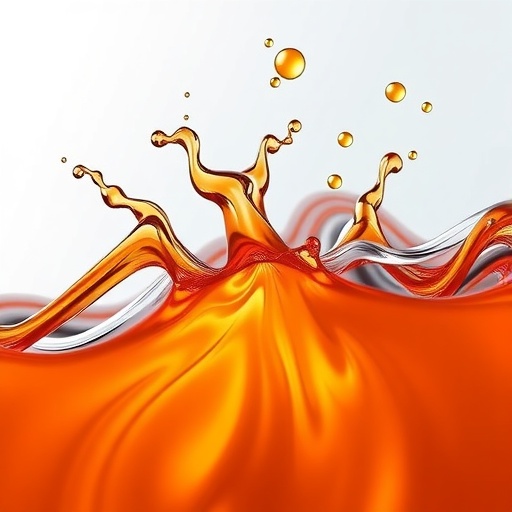
In the realm of computer graphics, a groundbreaking advancement has emerged, revolutionizing the way we simulate the interaction between water and air. Traditionally, simulations of ocean waves crashing onto the shore often failed to meet the standards of realism, with many methods concentrating solely on the characteristics of water while neglecting the consequential effects on the air. This separation can lead to a discrepancy between the simulated visuals and the actual physical phenomenon, particularly in representing intricate details like spray and foam. The new method brings us closer to capturing the essence of natural occurrences with unprecedented fidelity.
This pioneering approach comes from the innovative minds at the Technical University of Munich, where a team led by Professor Nils Thuerey has made significant strides in physics-based simulation. The team’s dedication to creating a more accurate representation of fluid dynamics culminated in a process that adeptly combines both air and water simulations into a single, coherent framework. By defining a continuous transition zone at the interface of these two phases, the researchers have allowed for a level of interaction that was previously unachievable in digital models.
The core of this advancement lies in the application of a hybrid simulation technique that merges both grid and particle-based methods. This dual-phase approach facilitates the calculation of essential physical properties, such as velocity and pressure, while also accommodating the movement and distribution of fluids in a dynamic fashion. This innovative system adapts to varying degrees of complexity in wave motion, refining its focus to areas of heightened activity. For instance, in the turbulent spray of breaking waves, the simulation becomes more sophisticated, providing a more lifelike depiction of what one would observe in reality.
.adsslot_6QJNnMfZ9h{width:728px !important;height:90px !important;}
@media(max-width:1199px){ .adsslot_6QJNnMfZ9h{width:468px !important;height:60px !important;}
}
@media(max-width:767px){ .adsslot_6QJNnMfZ9h{width:320px !important;height:50px !important;}
}
ADVERTISEMENT
One of the standout features of this hybrid simulation method is its ability to conserve computational resources. By honing in on specific areas where fluid motion is most pronounced, the researchers have significantly reduced the overall computing power required without sacrificing the quality or accuracy of the simulation. As a result, even on standard computing systems, users can simulate highly intricate wave patterns that incorporate billions of particles and grid cells. This efficiency is a game-changer for engineers and scientists alike, as it allows them to explore and visualize complex interactions without the burden of excessive computational demands.
The complexity of accurately calculating the pressure differences between air and water has historically posed considerable challenges within two-phase simulations. However, the introduction of this new method has simplified this critical calculation, opening up new possibilities for simulation applications. Researchers can now more effectively model interactions between phases, promoting more realistic outcomes in digital environments. This breakthrough not only enhances virtual effects in movies and video games but also holds significant implications for industries reliant on precise fluid dynamics.
Beyond the artistic and entertainment realms, the implications of this advanced simulation technique extend into vital practical applications, particularly in fields such as oceanography. Understanding and modeling fluid dynamics in coastal regions can be paramount in developing strategies for disaster prevention. For instance, this technology can aid in simulating high waves or dam failures, ultimately contributing to better coastal protection measures against flooding and extreme weather events. By providing coastal planners with precise visualizations and data, the research fosters the creation of effective strategies for mitigating risks associated with natural disasters.
The potential applications of this simulation technology are indeed vast, with the ability to impact a range of scientific and engineering disciplines. The new method not only enhances the aesthetic quality of fluid simulations but also allows for the examination of real-world scenarios that could inform policy and engineering solutions for disaster resilience. With the rising global impact of climate change and the increasing frequency of extreme weather occurrences, accurate simulation becomes imperative in preserving coastal ecosystems and safeguarding human infrastructure.
As this research evolves, the computing community and various related industries are poised to benefit from these advancements. The speed and accuracy of simulations play a crucial role in fields ranging from environmental science to urban planning. The collaborative efforts of academia and industry professionals are essential to fostering an environment where such technological advancements can thrive, translating research into actionable insights and real-world applications.
The findings from this study represent only the beginning of what is possible and hint at a future dominated by sophisticated simulations that can engage with real-world complexities. As researchers continue to refine their techniques and expand their understanding of fluid dynamics, the boundary between digital representations and reality becomes increasingly indistinguishable. Future studies will likely build upon this foundation, pushing the boundaries of what is achievable in the domain of computer graphics and simulations.
In conclusion, the innovations spearheaded by Professor Thuerey and his team encapsulate a remarkable milestone in the quest for realism in fluid simulations. Their work reflects a culmination of research that marries artistic vision with scientific principles, enabling a more profound understanding of how complex fluid interactions occur in nature. This dual-phase simulation heralds a new era of realism in interactive experiences and practical applications, fostering a greater appreciation for the intricacies of our planet’s dynamic systems. As these technologies continue to develop, they promise to reshape the landscape of scientific research, entertainment, and environmental protection.
Subject of Research: Simulation of Two-Phase Fluid Dynamics
Article Title: Adaptive Phase-Field-FLIP for Very Large Scale Two-Phase Fluid Simulation
News Publication Date: 27-Jul-2025
Web References: DOI
References: N/A
Image Credits: N/A
Keywords
Two-phase simulations, fluid dynamics, computational efficiency, realistic graphics, coastal protection, hybrid simulation methods, wave interactions, complex fluid motion, disaster preparedness, environmental simulation, visual effects.
Tags: advancements in computer graphicscapturing natural phenomena in graphicscoherent fluid simulation frameworkfluid dynamics simulationhybrid simulation methodsinnovations in digital modelingNils Thuerey fluid dynamicsocean wave simulation techniquesphysics-based fluid simulationrealistic water and air interactionspray and foam simulationTechnical University of Munich research




